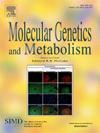用于评价尿酸尿疾病进展的放射学椎体严重程度评分的发展
IF 3.5
2区 生物学
Q2 ENDOCRINOLOGY & METABOLISM
引用次数: 0
摘要
尿酸尿与从青年期开始的进行性脊柱疾病有关。椎间盘的特征性影像学改变通常是最早可发现的骨骼表现。我们开发了一种基于三个参数的脊柱疾病严重程度评分,分为13个级别(C2-C7, T10-S1): 1)狭窄;2)钙化;3)真空盘现象。对136名参与者的409组x光片进行评分并分为:1)横断面队列,每个人最近一次访问;2)纵向队列,用于多次访问的参与者。与年龄、性别、临床测量和患者报告的结果进行相关性分析。两个队列均显示脊柱疾病评分与年龄相关。疼痛(SF-36,疼痛残疾指数)和身体功能(Schober's test, SF-36, Human Activity Profile)之间存在相关性。评分者内部和评分者之间的信度很高(ICC > 0.95, p < 0.001),在78分的总分中,可检测到的最小变化为2.6分。这种x线严重程度评分是高度可靠的,与年龄、性别、身体功能和疼痛的几种临床测量相关,并允许检测临床有意义的变化。它也可以作为监测疾病进展和治疗反应的结果指标。本文章由计算机程序翻译,如有差异,请以英文原文为准。
Development of a radiographic vertebral severity score for evaluation of disease progression in alkaptonuria
Alkaptonuria is associated with progressive spine disease beginning in young adulthood. Characteristic radiographic changes in the intervertebral discs are often the earliest detectable skeletal manifestations. We developed a radiographic severity score measuring spine disease at 13 levels (C2-C7, T10-S1) based upon three parameters: 1) narrowing; 2) calcification; 3) vacuum disc phenomenon. 409 sets of radiographs from 136 participants were scored and divided into: 1) a cross-sectional cohort, with the most recent visit of each individual; 2) a longitudinal cohort, for participants with multiple visits. Correlations with age, sex, clinical measurements and patient-reported outcomes were performed. Both cohorts showed correlation of spinal disease score with age. Correlations were found with pain (SF-36, Pain Disability Index) and physical function (Schober's test, SF-36, Human Activity Profile). Intra- and inter-rater reliability were high for the total score (ICC > 0.95, p < 0.001), with a minimal detectable change of 2.6 points out of a total possible score of 78. This radiographic severity score is highly reliable, correlates with age, sex, and several clinical measures of physical function and pain, and allows for the detection of clinically meaningful changes. It can also be used as an outcome measure to monitor disease progression and response to therapy.
求助全文
通过发布文献求助,成功后即可免费获取论文全文。
去求助
来源期刊

Molecular genetics and metabolism
生物-生化与分子生物学
CiteScore
5.90
自引率
7.90%
发文量
621
审稿时长
34 days
期刊介绍:
Molecular Genetics and Metabolism contributes to the understanding of the metabolic and molecular basis of disease. This peer reviewed journal publishes articles describing investigations that use the tools of biochemical genetics and molecular genetics for studies of normal and disease states in humans and animal models.
 求助内容:
求助内容: 应助结果提醒方式:
应助结果提醒方式:


